As a licensed real estate agent with over 15 years of experience, I’ve had the pleasure of helping over 1,600 international buyers find their dream homes in Turkey. With its unique blend of European and Asian influences, Turkey’s villa market offers an unbeatable combination of style, comfort, and value.
Table Of Content
- Key Takeaways
- The Turkish Villa Market: An Overview
- Why Turkey Attracts International Property Buyers
- Current Market Trends in 2023
- Popular Types of Villas for Sale in Turkey
- Detached Villas: Ultimate Privacy and Space
- Twin Villas: Balanced Affordability and Comfort
- Townhouse Villas: Community Living
- Luxury Villa Options in Turkey
- Beachfront Villas
- Golf Resort Villas
- Historical and Traditional Turkish Villas
- Key Features of Turkish Villas
- Architectural Styles and Design Elements
- Common Amenities and Facilities
- Indoor and Outdoor Living Spaces
- Top Locations for Villa Purchases in Turkey
- Bodrum: Luxury and Exclusivity
- Antalya: Family-Friendly Options
- Fethiye: Natural Beauty and Affordability
- Istanbul: Urban Villas and Investment Potential
- Price Ranges for Turkish Villas
- Budget-Friendly Options
- Mid-Range Villas
- Luxury Segment
- Investment Potential of Turkish Villas
- Rental Yield Expectations
- Capital Appreciation Trends
- Holiday Rental Market Opportunities
- Legal Considerations for Foreign Buyers
- Property Ownership Laws for Non-Turkish Citizens
- Required Documentation and Procedures
- Military Clearance and Other Restrictions
- The Buying Process for Villas in Turkey
- Initial Property Search and Viewing
- Making an Offer and Negotiations
- Contracts and Deposit Requirements
- Completion and Title Deed Transfer
- Additional Costs When Buying a Villa in Turkey
- Purchase Taxes and Fees
- Ongoing Maintenance and Community Charges
- Insurance and Security Considerations
- Financing Options for Villa Purchases
- Turkish Mortgage Availability for Foreigners
- International Financing Solutions
- Turkish Citizenship Through Property Investment
- Minimum Investment Requirements
- Application Process and Timeline
- Lifestyle Benefits of Owning a Turkish Villa
- Climate and Natural Environment
- Cultural Experiences and Local Community
- Healthcare and Education Facilities
- Common Mistakes to Avoid When Buying a Villa in Turkey
- Skipping Due Diligence
- Underestimating Total Costs
- Neglecting Location Research
- Working with a Reputable Real Estate Agent
- Benefits of Local Expertise
- What to Look for in an Agent
- Conclusion: Making an Informed Villa Purchase in Turkey
- FAQ
- What are the most sought-after locations for villa purchases in Turkey?
- What is the typical price range for villas in Turkey?
- Can foreigners own property in Turkey?
- What are the ongoing costs associated with owning a villa in Turkey?
- Is it possible to obtain Turkish citizenship through villa investment?
- What is the process of buying a villa in Turkey?
- Can I finance my villa purchase in Turkey?
- What are the benefits of working with a local real estate agent?
- What are the common mistakes to avoid when buying a villa in Turkey?
Turkey’s property market is booming, with a wide range of villas available to suit every taste and budget. From luxurious beachfront estates to charming family homes, there’s something for everyone. As an expert in the field, I’m excited to share my insights on the most popular villa types and what makes them so attractive to buyers.
Key Takeaways
- Turkey’s villa market offers exceptional value compared to other Mediterranean destinations.
- A wide range of villa styles are available, from traditional Ottoman-inspired designs to ultra-modern minimalist villas.
- The country’s unique position bridging Europe and Asia creates a fascinating blend of architectural styles.
- Turkish villas are perfect for holiday homes, permanent residences, or investment properties.
- Understanding the different villa types will help you make an informed decision when buying a property in Turkey.
The Turkish Villa Market: An Overview
Turkey has become a hotspot for international property buyers, with its villa market leading the way. As a licensed real estate agent in Turkey since 2006, I’ve witnessed firsthand the remarkable growth and transformation of this sector.
The Turkish villa market has seen significant appreciation in property values, particularly in prime coastal areas, with annual growth rates of 10-15% in recent years. This growth is attributed to the country’s attractive combination of affordable luxury, stunning Mediterranean coastline, and a straightforward buying process.
Why Turkey Attracts International Property Buyers
Turkey’s appeal to international property buyers lies in its unique blend of cultural heritage, natural beauty, and modern amenities. Buyers from the UK, Germany, Russia, and the Middle East are particularly drawn to Turkish villas, each attracted by different aspects such as the country’s strategic location, historical significance, and contemporary lifestyle offerings.
- British buyers are often attracted to the relaxed, Mediterranean lifestyle.
- German investors appreciate the potential for rental income.
- Russian buyers are drawn to the luxury and exclusivity offered by high-end villas.
Current Market Trends in 2023
The current market trends in Turkey’s villa market reflect changing buyer priorities, with a notable increase in demand for properties featuring private outdoor spaces, home offices, and smart home technology. The pandemic has accelerated interest in standalone villas over apartments, as buyers prioritize privacy and space.
| Trend | Description | Impact |
|---|---|---|
| Increased demand for private outdoor spaces | Buyers seeking more space and privacy | Rise in sales of villas with gardens |
| Smart home technology integration | Modern amenities becoming a necessity | Increased value of properties with smart features |
| Home offices | Remote work trend influencing property choices | More buyers looking for dedicated workspace |
Popular Types of Villas for Sale in Turkey
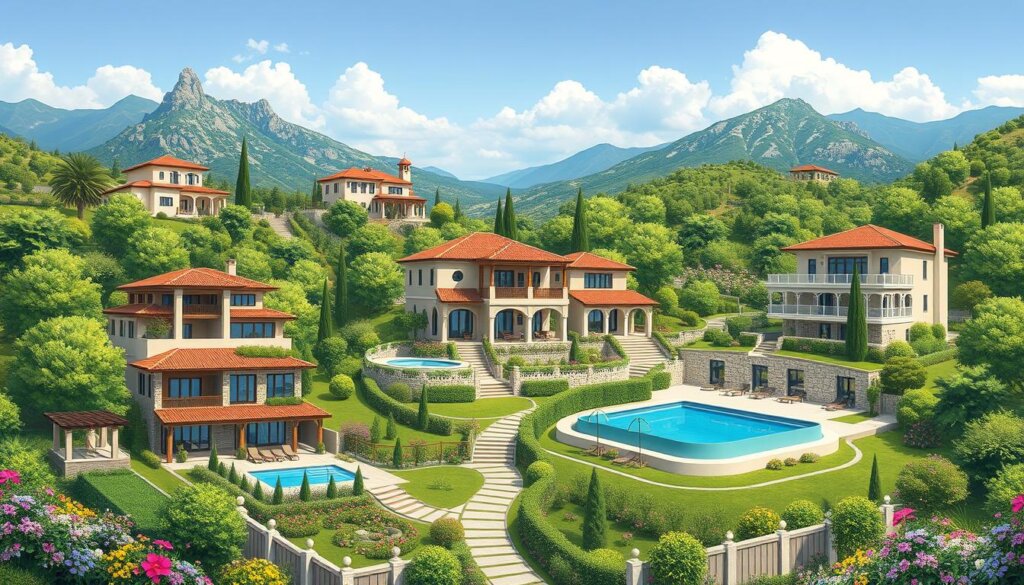
The Turkish villa market is renowned for its diverse offerings, providing something for every kind of buyer. Whether you’re looking for a luxurious detached villa, a family-friendly twin villa, or an economical townhouse, Turkey has a wide range of villa types to suit different lifestyles and budgets.
Detached Villas: Ultimate Privacy and Space
Detached villas offer the ultimate in privacy and space, typically ranging between 300 to 700 square meters or more. These standalone properties are ideal for large families or those seeking maximum customisation options. With features like private gardens and swimming pools, detached villas represent the premium end of the Turkish villa market.
Twin Villas: Balanced Affordability and Comfort
Twin villas provide a balanced mix of affordability and comfort, sharing one wall with a neighbouring property while maintaining good levels of privacy and outdoor space. Usually ranging from 250 to 400 square meters, twin villas are particularly popular among small to medium-sized families and retirees.
Townhouse Villas: Community Living
Townhouse villas are the most affordable entry point into Turkish villa ownership, typically arranged in rows within gated communities. These compact properties, usually between 150 to 300 square meters, offer excellent value for money and lower maintenance requirements, making them ideal for holiday homes or first-time buyers.
Luxury Villa Options in Turkey
Turkey’s luxury villa segment has undergone significant transformation, offering world-class properties that rival those in established markets.
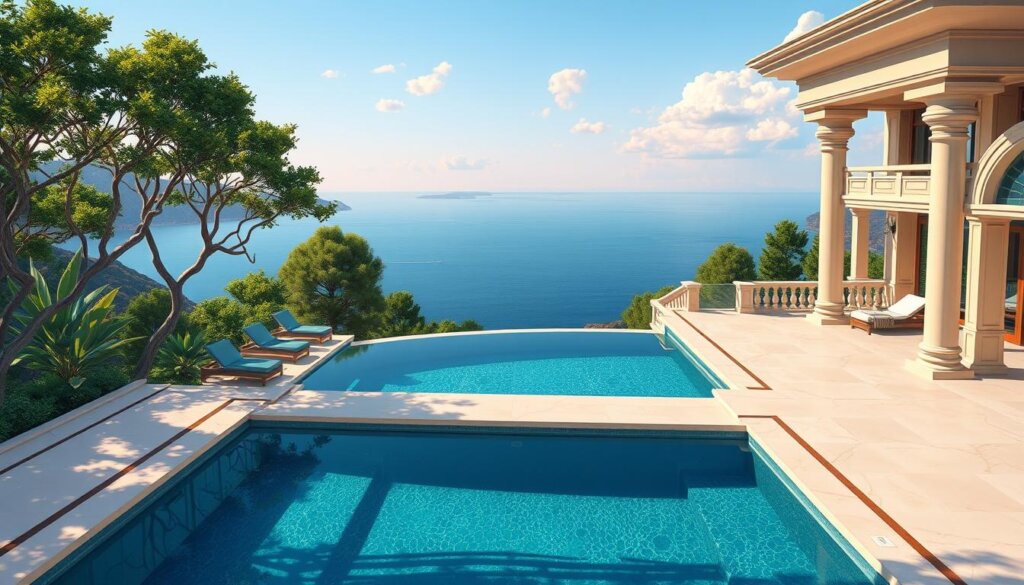
The luxury villa market in Turkey is booming, with high-end properties that offer unparalleled luxury and comfort. Beachfront villas, golf resort villas, and historical villas are among the top choices for discerning buyers.
Beachfront Villas
Beachfront villas represent the pinnacle of luxury in Turkey, with direct sea access commanding premium prices. These villas feature infinity pools and floor-to-ceiling windows maximising the views.
Golf Resort Villas
Golf resort villas have gained popularity, particularly around Belek in Antalya, with championship courses designed by renowned golf legends. These properties benefit from comprehensive resort facilities and 24/7 security.
Historical and Traditional Turkish Villas
For those seeking authentic character, historical and traditional Turkish villas offer a unique alternative. Restored Ottoman houses in areas like Kalkan’s old town combine period features with modern comforts.
Key Features of Turkish Villas
One of the most striking aspects of Turkish villas is their ability to seamlessly blend indoor and outdoor living spaces. As a licensed real estate agent in Turkey since 2006, I’ve seen firsthand how these properties are designed to maximise comfort and luxury.
Turkish villas showcase a fascinating blend of architectural influences, from Mediterranean and Ottoman traditions to cutting-edge contemporary design.
Architectural Styles and Design Elements
Modern Turkish villas typically feature clean lines, large windows, and open-plan living areas that maximise natural light. The use of local materials like natural stone, marble, and timber creates properties that feel connected to their surroundings.
Common Amenities and Facilities
Private swimming pools are almost standard in mid to high-end villas, with infinity edges being particularly popular in properties with sea or mountain views. Many luxury villas include wellness facilities such as Turkish hammams, saunas, and fitness rooms.
Indoor and Outdoor Living Spaces
The indoor-outdoor lifestyle is central to Turkish villa design, with covered terraces, summer kitchens, and landscaped gardens that can be enjoyed for most of the year. Smart home technology has become increasingly common in new developments, controlling everything from security to entertainment.
Top Locations for Villa Purchases in Turkey
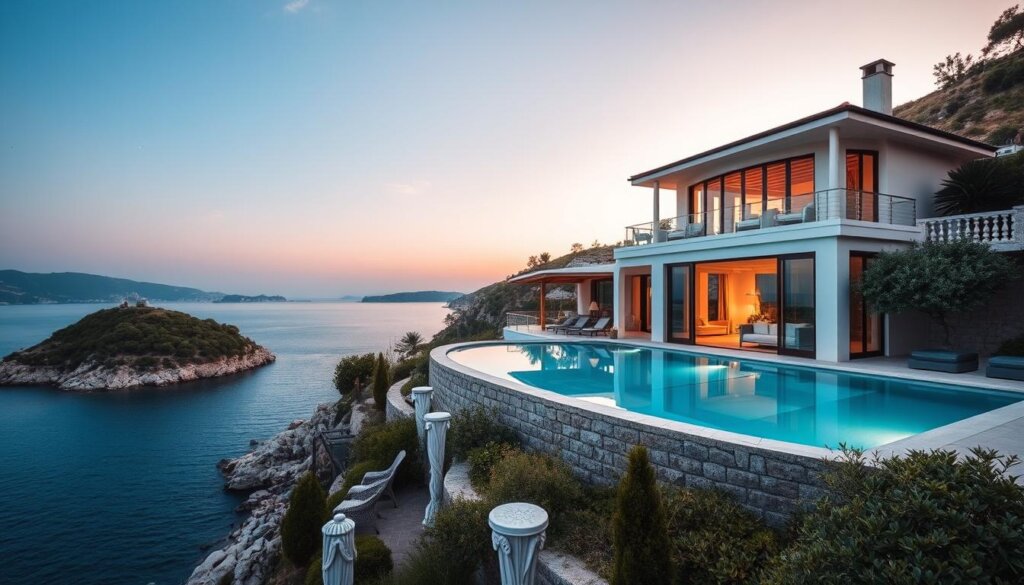
Turkey offers a diverse range of villa locations, each with its unique charm. The choice of location is perhaps the most critical factor when buying a Turkish villa, as each region offers a distinct lifestyle, investment potential, and price point that appeals to different types of buyers.
Bodrum: Luxury and Exclusivity
Bodrum Peninsula has established itself as Turkey’s premier luxury destination, attracting celebrities, business leaders, and discerning buyers seeking exclusivity and sophistication. The peninsula’s various bays each have their own character, from the vibrant Bodrum Centre to the tranquil Turkbuku and Gumusluk areas.
Antalya: Family-Friendly Options
Antalya province offers the widest range of villa options, from family-friendly areas like Konyaalti and Lara to golf paradises like Belek. The region benefits from Turkey’s largest international airport, making it popular with families and those planning to split their time between Turkey and their home country.
Fethiye: Natural Beauty and Affordability
Fethiye combines stunning natural beauty with more affordable property prices. Areas like Ovacik and Hisaronu offer mountain views and cooler summer temperatures, while Calis Beach provides seafront living at reasonable prices.
Istanbul: Urban Villas and Investment Potential
Istanbul offers a different proposition with its urban villas in compounds, particularly on the European side. These properties typically offer strong capital growth potential due to the city’s continued expansion and infrastructure development.
Price Ranges for Turkish Villas
Turkish villas offer a diverse range of options for buyers, with prices varying significantly based on factors like location, size, and amenities. As a licensed real estate agent in Turkey since 2006, I’ve seen how the market caters to various budgets, from affordable to luxury segments.
Budget-Friendly Options
For those on a tighter budget, villas can be found in the €100,000-€250,000 range. These properties are often smaller, with 2-3 bedrooms, and located in developing areas or slightly inland. Regions like Didim and parts of Fethiye offer great value for first-time buyers or investors looking for rental income.
Mid-Range Villas
The mid-range market (€250,000-€500,000) is popular among international buyers. Here, you can find well-constructed 3-4 bedroom detached or semi-detached villas in established areas with good amenities. Locations like Calis Beach in Fethiye and Konyaalti in Antalya offer excellent value, with properties typically including private pools and quality finishes.
Luxury Segment
For those seeking luxury, villas priced €500,000+ offer custom design, premium locations, and high-end specifications. Seafront villas in Kalkan, Yalikavak, and Turkbuku can command €1-5 million. Unique properties with exceptional views or extensive land can reach €10 million or more, making them a valuable investment. You can explore more luxury villas for sale in Turkey.
Investment Potential of Turkish Villas
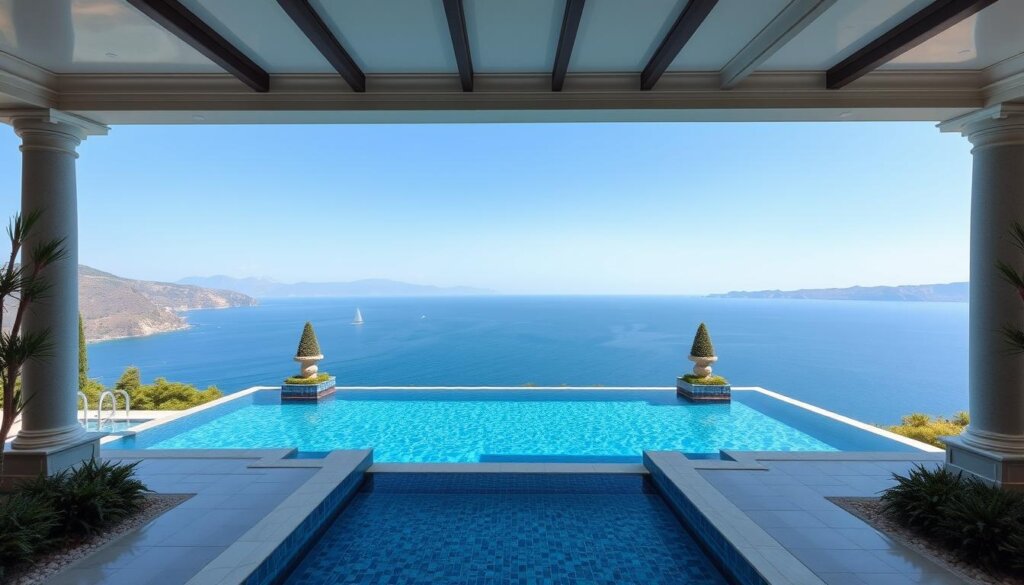
The Turkish villa market presents an attractive investment proposition, with opportunities for both short-term rental income and long-term capital gains. As a seasoned real estate agent, I have observed that Turkish villas have established themselves as compelling investment options, offering a combination of rental income potential, capital appreciation, and lifestyle benefits that few other markets can match.
Rental Yield Expectations
Rental yields for well-located Turkish villas typically range from 5-8% net, with premium properties in tourist hotspots like Kalkan achieving even higher returns during the peak summer months. The holiday rental season in Turkey has been extending steadily, enhancing the income potential for villa owners.
Capital Appreciation Trends
Capital appreciation has been strong in established areas, with average annual growth of 10-15% in prime locations over the past five years, outperforming many European markets. The limited supply of land in desirable coastal areas, combined with increasing construction costs and growing international demand, creates a favourable environment for continued price growth.
Holiday Rental Market Opportunities
The holiday rental market in Turkey continues to evolve, with luxury villas commanding premium rates (€1,000-5,000 per week in high season) and achieving high occupancy when professionally managed. Many investors are now focusing on properties that offer year-round rental potential, with features like heating systems, indoor pools, and proximity to amenities that attract winter visitors as well as summer tourists.
Turkey’s relatively low property purchase and holding costs mean investors can achieve better net returns on their investment. With its unique blend of luxury, culture, and natural beauty, Turkey remains an attractive destination for property investors seeking both rental income and capital appreciation.
Legal Considerations for Foreign Buyers
With its liberalised property laws, Turkey has made it relatively straightforward for foreigners to purchase villas, but certain legal considerations remain essential to understand. As a licensed real estate agent in Turkey, I’ve guided numerous international buyers through the process.
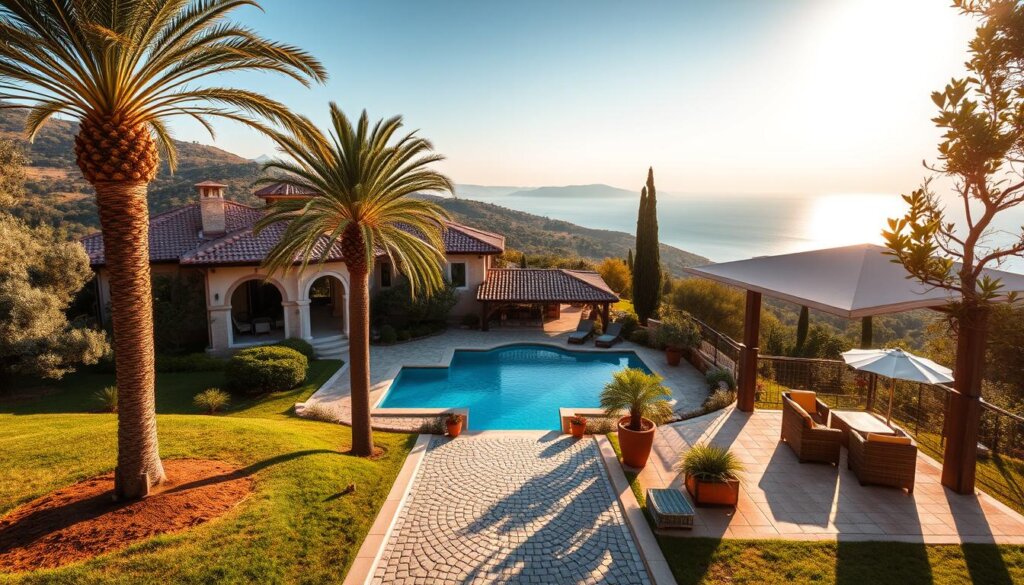
Property Ownership Laws for Non-Turkish Citizens
Foreign nationals can buy property in Turkey with few restrictions, provided their country of citizenship allows reciprocal rights for Turkish citizens. This condition is met by most European, North American, and Middle Eastern nations, making Turkey an attractive destination for investment.
Required Documentation and Procedures
The required documentation is straightforward, including passport copies, Turkish tax numbers, and sometimes bank statements or proof of funds. A Power of Attorney can be arranged for buyers who cannot be present throughout the process.
Military Clearance and Other Restrictions
The most significant legal peculiarity is the military clearance requirement, where properties must be checked to ensure they’re not in military zones or security-sensitive areas. Foreigners also face some restrictions on land ownership, being limited to 30 hectares nationwide.
Working with experienced professionals who specialise in helping foreign buyers is essential to buying a villa in Turkey smoothly and avoiding potential pitfalls.
The Buying Process for Villas in Turkey
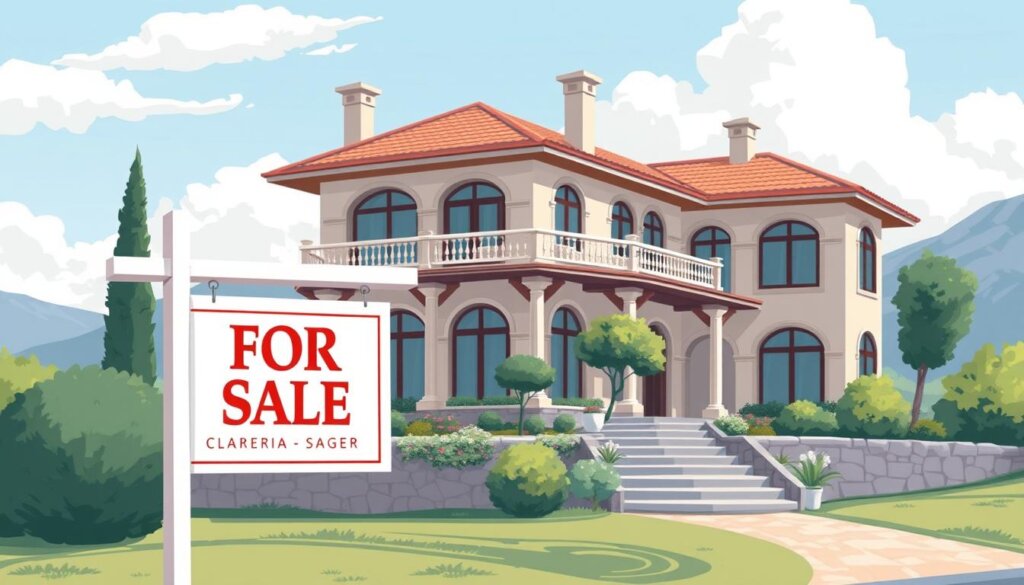
The process of buying a villa in Turkey is relatively simple, typically taking four to six weeks from offer acceptance to completion. As a licensed real estate agent in Turkey since 2006, I’ve guided many clients through this process, ensuring a smooth transaction.
Initial Property Search and Viewing
The journey begins with an initial property search and viewing. I recommend working with a reputable agent who can pre-select suitable villas based on your requirements, saving you valuable time during your visit to Turkey.
Making an Offer and Negotiations
When making an offer, it’s essential to understand that some negotiation is expected in the Turkish market. Typical discounts range from 5-10% depending on the property’s time on market and the seller’s circumstances.
Contracts and Deposit Requirements
Once an offer is accepted, a reservation deposit secures the property while contracts are prepared. A more substantial deposit is required upon contract signing, typically 30-50% of the purchase price.
Completion and Title Deed Transfer
The final stage involves the title deed (TAPU) transfer at the land registry office. Both buyer and seller (or their legal representatives) must be present, and the remaining balance is paid.
Additional Costs When Buying a Villa in Turkey
When purchasing a villa in Turkey, it’s crucial to consider the additional costs beyond the initial purchase price. As an experienced real estate agent, I’ve seen many buyers overlook these expenses, which can significantly impact their overall investment.
Purchase Taxes and Fees
The additional costs typically amount to 8-10% of the property value, which is relatively lower than many European countries. The main purchase taxes include VAT (KDV) at 18% for new properties, title deed transfer tax (4% split equally between buyer and seller), and stamp duty (0.75%). Legal fees range from €1,000-2,500, while translation and notary costs add approximately €300-500.
Ongoing Maintenance and Community Charges
For villas within managed complexes, annual maintenance fees (aidat) cover common area maintenance, security, and shared facilities, typically ranging from €1,000-3,000. Independent villas require budgeting for maintenance, with annual costs for pool maintenance, gardening, and general upkeep ranging from €2,000-5,000. Annual property tax is remarkably affordable at 0.1-0.3% of the government’s assessed value.
Insurance and Security Considerations
Insurance is essential yet affordable, with comprehensive building insurance costing approximately €300-600 annually for a typical villa. Contents insurance adds another €200-400, depending on value. Many buyers opt for professional property management services, costing €1,000-2,500 annually, to handle maintenance, bill payments, and rental management.
Financing Options for Villa Purchases
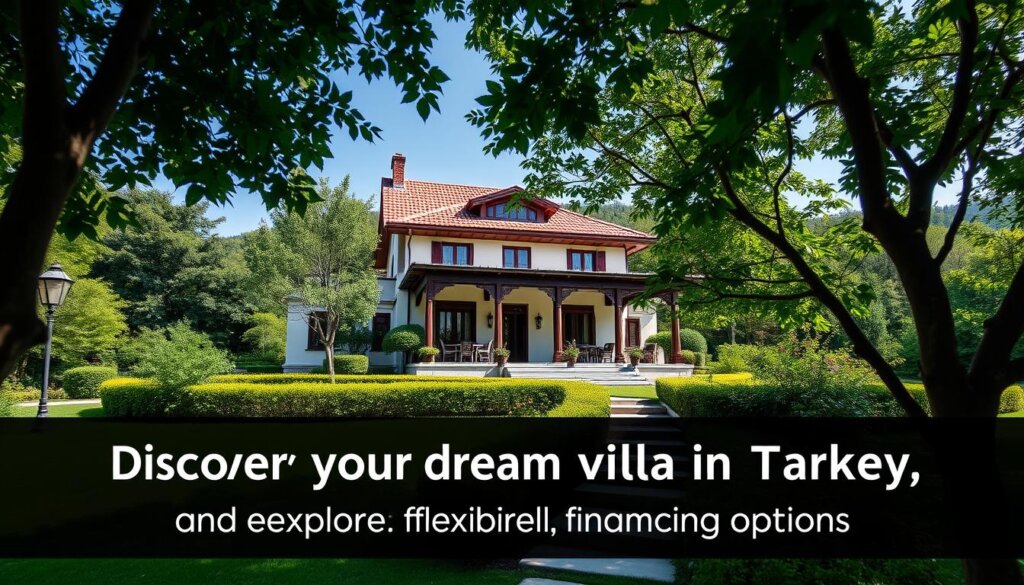
The Turkish villa market provides several financing options for foreign investors. While many international buyers purchase Turkish villas with cash, there are financing options available that can help make your dream property more accessible or allow you to preserve capital for other investments.
Turkish Mortgage Availability for Foreigners
Turkish banks do offer mortgages to foreign nationals, typically lending up to 50% of the property’s appraised value with terms extending to 10 years. Although interest rates are higher than in many European countries, most Turkish mortgages are offered in Euros or US Dollars, protecting international buyers from currency fluctuations.
International Financing Solutions
For those preferring not to use Turkish banks, international financing solutions include releasing equity from existing properties in your home country. This often provides better interest rates and longer repayment terms. Some developers also offer in-house payment plans for new-build villas, typically requiring a 30-50% deposit with the balance spread over 12-36 months interest-free.
It’s worth noting that cash buyers often have stronger negotiating positions and may secure better discounts. I always recommend that clients explore all financing options before committing to a purchase, as the right financial structure can significantly impact the overall return on your property investment.
Turkish Citizenship Through Property Investment
Turkey’s Citizenship by Investment program has revolutionised the way foreigners can obtain a second passport, making it easier than ever through property investment. As a licensed real estate agent in Turkey since 2006, I’ve seen firsthand how this program has attracted international investors seeking not only a secure second passport but also a valuable investment opportunity.
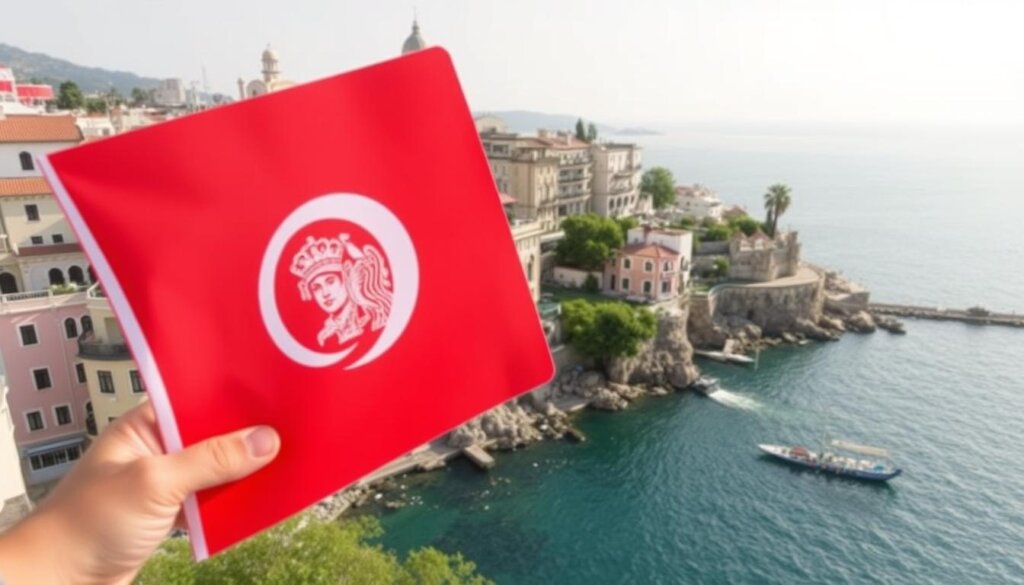
Minimum Investment Requirements
The current minimum investment requirement for Turkish citizenship through property investment stands at $400,000 USD, a significant reduction from the original $1 million threshold. This makes Turkey’s program one of the more accessible citizenship by investment programs globally. The investment can be in any residential or commercial property, or multiple properties, as long as the total value meets the minimum requirement.
The investment must be maintained for at least three years. After this period, the property can be sold without affecting the citizenship status, providing a flexible investment option for those seeking Turkish citizenship.
Application Process and Timeline
The application process for Turkish citizenship begins after the property purchase is completed and registered. Applicants must provide various documents, including birth certificates, marriage certificates, and police clearance certificates from their home country. The timeline from application to receiving citizenship typically ranges from 3 to 6 months.
Upon successful application, Turkish citizenship is granted not only to the applicant but also to their spouse and children under 18 years old. This comprehensive approach makes Turkey’s Citizenship by Investment program particularly appealing to families seeking a secure future.
Lifestyle Benefits of Owning a Turkish Villa
Owning a villa in Turkey is more than just a financial investment; it’s a lifestyle choice that combines the charm of the Mediterranean with modern comforts. Turkish villas and properties have become increasingly popular among international buyers, drawn by the promise of a luxurious life amidst stunning natural beauty and rich cultural heritage.
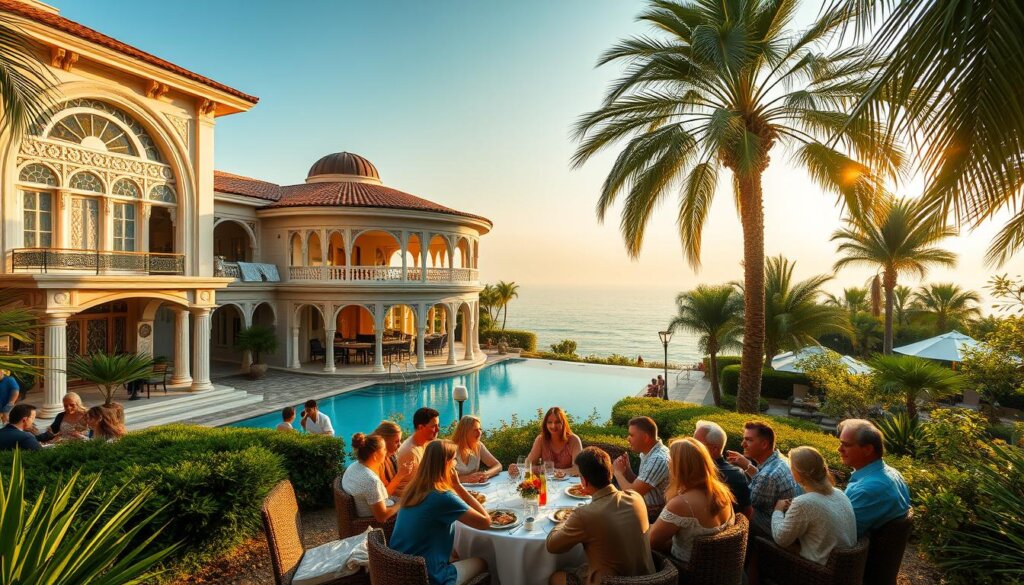
Climate and Natural Environment
Turkey’s climate is one of its greatest assets, with coastal areas enjoying over 300 days of sunshine annually. The extended season, from April to November, allows villa owners to maximise their outdoor living spaces, making the most of the pleasant weather.
Cultural Experiences and Local Community
The rich cultural tapestry of Turkey adds depth to the villa ownership experience. Ancient ruins, traditional markets, and authentic cuisine create a lifestyle that’s both stimulating and enriching. Many villa communities develop vibrant international social scenes, with owners from diverse backgrounds creating supportive networks that enhance the enjoyment of Turkish life.
Healthcare and Education Facilities
Turkey has made significant improvements in its healthcare facilities, with private hospitals in major centres offering world-class care at a fraction of Western prices. International and bilingual education options have also expanded in popular expat areas, making Turkey increasingly viable for families with school-age children.
Common Mistakes to Avoid When Buying a Villa in Turkey
With over 1,600 international clients assisted, I’ve identified recurring mistakes that can complicate the villa buying process in Turkey. When making such a significant investment, it’s crucial to be aware of these potential pitfalls to make an informed decision.
Skipping Due Diligence
One of the most critical errors is skipping proper due diligence. It’s essential to verify that the property has a clean title, proper building permits, and habitation licenses before proceeding with any purchase. Many buyers fail to check for outstanding debts attached to the property, which can become their responsibility if not settled before transfer.
Underestimating Total Costs
Underestimating the total cost of ownership is another common pitfall. Buyers often focus solely on the purchase price while overlooking taxes, maintenance costs, insurance, and management costs that impact the overall investment. For those buying with rental income in mind, overestimating occupancy rates or rental values can lead to financial disappointment.
Neglecting Location Research
Neglecting thorough location research often leads to regret. Buyers sometimes discover too late that their dream villa is affected by seasonal factors like wind patterns, tourist crowds, or accessibility issues. I always advise clients to view multiple properties across different areas before committing to a purchase, ensuring they make a well-informed decision when buying a villa or villas.
Working with a Reputable Real Estate Agent
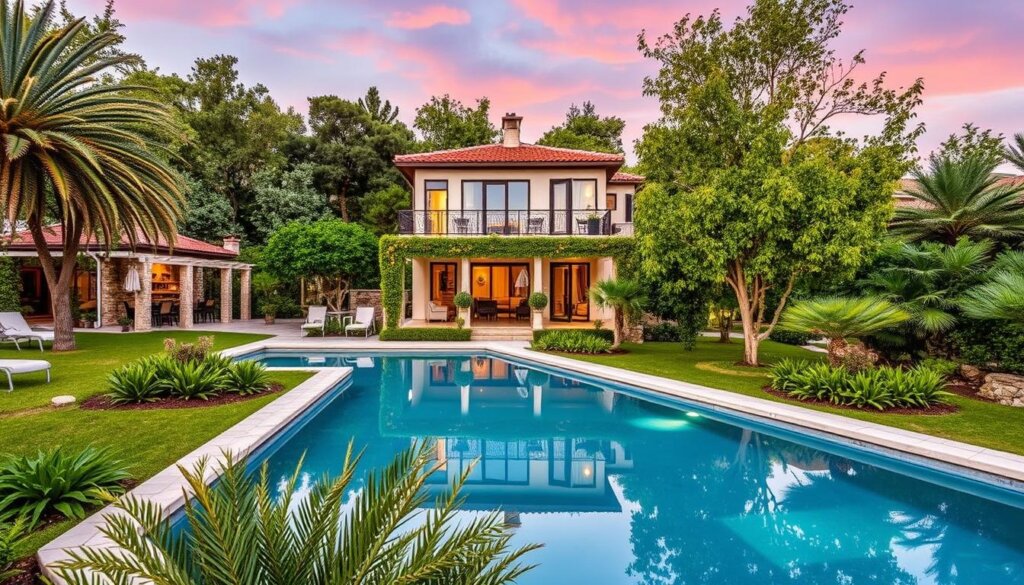
The process of purchasing a villa in Turkey can be streamlined significantly by partnering with a knowledgeable real estate agent. As someone who has been licensed since 2006 and has assisted over 1,600 foreign buyers, I can attest to the value of local expertise.
Benefits of Local Expertise
A reputable agent brings local knowledge, market insights, and negotiation skills that can save you both time and money. With local expertise, buyers can avoid common pitfalls, identify emerging areas with growth potential, and gain access to properties before they reach the open market.
What to Look for in an Agent
When choosing an agent, look for proper licensing, transparency about fees, and a track record of working with international clients. Experience matters in Turkish real estate – an established agent will have navigated various market cycles and built relationships that benefit their clients. Effective communication is also crucial, ensuring that you receive clear information in your language.
Conclusion: Making an Informed Villa Purchase in Turkey
As a seasoned real estate agent, I’ve seen firsthand the impact that a well-informed villa purchase can have on one’s life. Purchasing a villa in Turkey represents not just a property acquisition but an investment in a lifestyle that can transform your life for years to come.
The key to a successful purchase lies in thorough research, clear understanding of your priorities, and working with experienced professionals who can guide you through each step of the process. Whether you’re seeking a holiday home, permanent residence, investment property, or path to citizenship, Turkey’s diverse villa market offers options to match virtually any requirement and budget.
To make informed decisions, it’s essential to explore different regions, villa types, and price points. The perfect villa isn’t just about the property itself but also about the surrounding communities, access to amenities, and alignment with your lifestyle aspirations. With the right guidance, buying a Turkish villa can be a straightforward and rewarding experience, opening the door to a new chapter of Mediterranean living. If you’re ready to explore the possibilities of villa ownership in Turkey, I’m here to help find your perfect property – contact me at +90 532 577 87 67 to begin your journey.
FAQ
What are the most sought-after locations for villa purchases in Turkey?
Bodrum, Antalya, Fethiye, and Istanbul are among the top locations, offering a mix of luxury, natural beauty, and investment potential. Each location has its unique charm and advantages, catering to different preferences and investment goals.
What is the typical price range for villas in Turkey?
Prices vary widely, from €100,000 for budget-friendly options to over €500,000 for luxury villas. The price depends on factors such as location, size, amenities, and architectural style.
Can foreigners own property in Turkey?
Yes, foreigners can own property in Turkey, but there are certain restrictions and requirements, such as obtaining military clearance for properties located in sensitive areas.
What are the ongoing costs associated with owning a villa in Turkey?
Ongoing costs include maintenance charges, community fees, insurance, and property taxes. These costs vary depending on the villa’s location, size, and amenities.
Is it possible to obtain Turkish citizenship through villa investment?
Yes, investing in a villa in Turkey can lead to Turkish citizenship, provided the investment meets the minimum requirements set by the Turkish government, currently 0,000.
What is the process of buying a villa in Turkey?
The process involves initial property search and viewing, making an offer, signing a contract, and completing the title deed transfer. It’s advisable to work with a reputable real estate agent to ensure a smooth transaction.
Can I finance my villa purchase in Turkey?
Yes, there are financing options available, including Turkish mortgages for foreigners and international financing solutions. The availability and terms of these options vary depending on the lender and your financial situation.
What are the benefits of working with a local real estate agent?
A local real estate agent provides valuable expertise, guides you through the buying process, and helps you make an informed decision. They have in-depth knowledge of the local market, ensuring you find the right villa that meets your needs and budget.
What are the common mistakes to avoid when buying a villa in Turkey?
Common mistakes include skipping due diligence, underestimating total costs, and neglecting location research. It’s essential to research thoroughly, consider all costs, and work with a reputable agent to avoid these pitfalls.

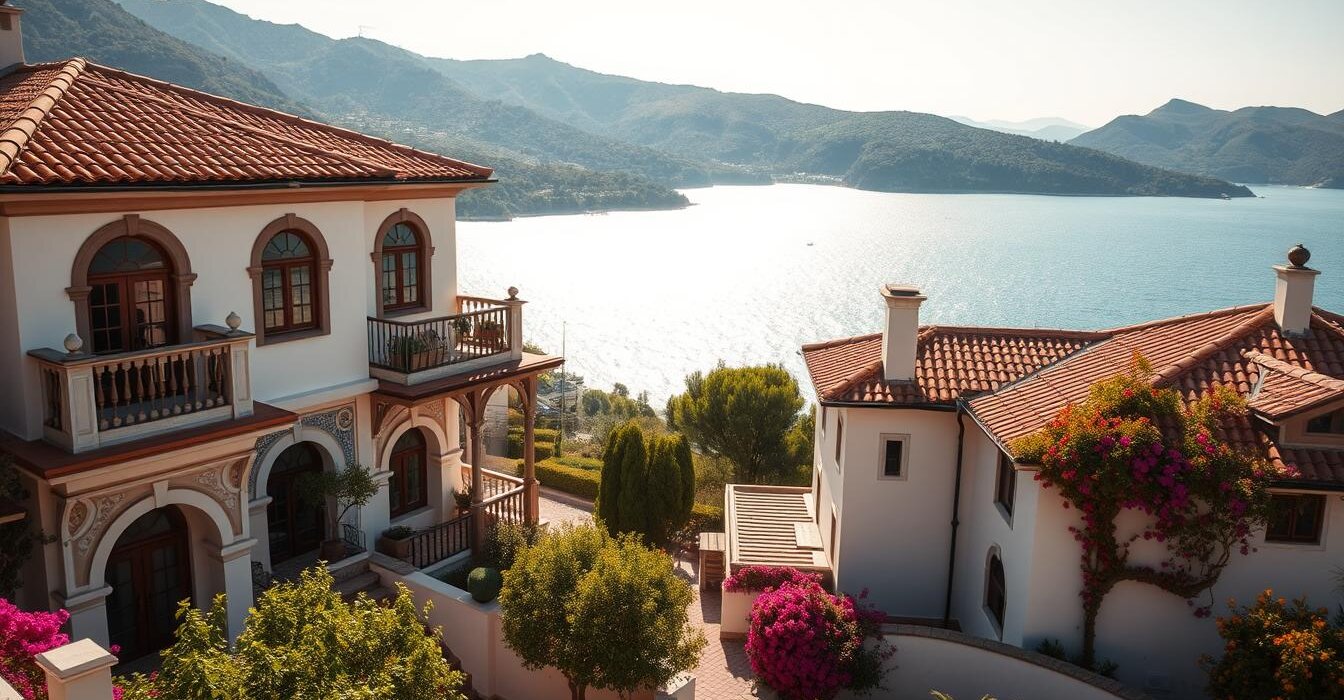
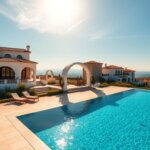




No Comment! Be the first one.